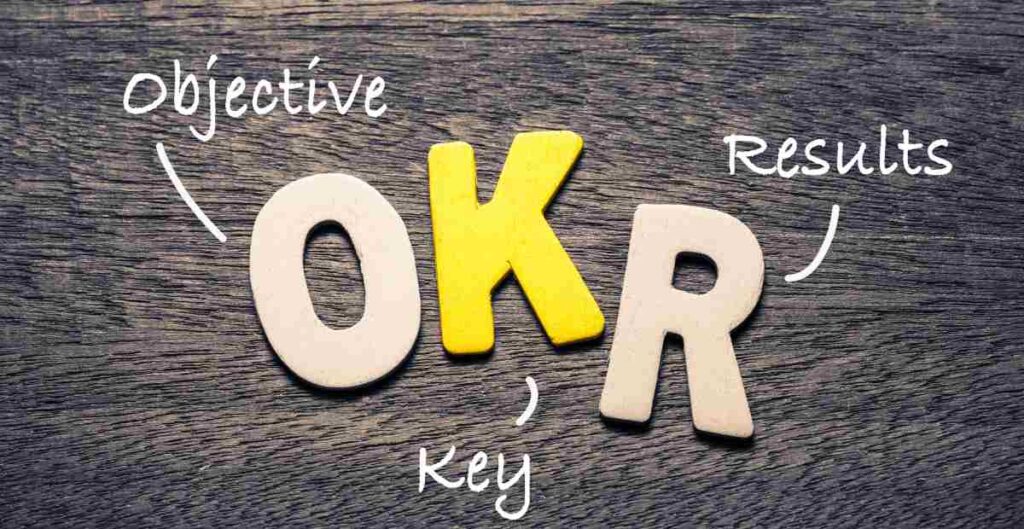As a human resources professional, my job is to ensure that the company’s employees are motivated and engaged. One of the ways I achieve this is by setting clear goals and tracking progress. Objectives and Key Results (OKRs) are a popular goal-setting framework that can help streamline HR processes and improve employee performance. In this article, I’ll provide tips and examples for using an OKR tracker in your HR department.
What are OKRs?

OKRs are a goal-setting framework that was popularized by Google in the early 2000s. The concept is simple – each employee sets Objectives (what they want to achieve) and Key Results (how they will measure success) for a given period (typically a quarter). These goals are then tracked and progress is reviewed regularly.
The beauty of OKRs is that they are transparent, measurable, and aligned with the company’s overall strategy. They also encourage employees to stretch themselves and focus on what really matters. By implementing OKRs in your HR department, you can ensure that everyone is working towards the same goals and that progress is being tracked effectively.
Benefits of Using an OKR Tracker

Using an OKR tracker can bring many benefits to your HR department. Firstly, it allows you to easily track progress and see where employees are excelling or struggling. This can help you identify areas where additional support may be needed and ensure that everyone is working towards the same goals.
Secondly, an OKR tracker can help improve communication and collaboration between team members. By having clear goals and progress updates, employees can work together more effectively and avoid duplication of effort.
Finally, OKRs can help improve employee motivation and engagement. When employees have clear goals and can see progress towards them, they are more likely to feel a sense of accomplishment and satisfaction in their work.
Understanding the “Measure What Matters” Philosophy

The “Measure What Matters” philosophy is at the heart of the OKR framework. This concept emphasizes the importance of setting goals that are meaningful and aligned with the company’s overall strategy. It also stresses the need to measure progress towards these goals using specific, measurable metrics.
When setting OKRs, it’s important to keep this philosophy in mind. Avoid setting goals that are vague or difficult to measure. Instead, focus on goals that are specific, measurable, achievable, relevant, and time-bound (SMART). This will ensure that your goals are meaningful and aligned with the company’s overall strategy.
Writing Effective and Measurable OKRs
When writing OKRs, it’s important to follow a few key principles. Firstly, ensure that you are setting goals that are aligned with the company’s overall strategy. This will ensure that everyone is working towards the same goals and that progress is being made in the right areas.
Secondly, make sure that your goals are specific and measurable. This will enable you to track progress and identify areas where additional support may be needed.
Finally, ensure that your goals are challenging but achievable. Stretching employees to achieve ambitious goals can be motivating, but setting impossible goals can be demoralizing.
OKR Examples for Different Industries

OKRs can be used in almost any industry and for any type of role. Here are a few examples of how OKRs can be used in different industries:
Information Technology
Objective: Improve website load time Key Results:
Reduce average load time to under 3 seconds Implement caching for frequently accessed pages Optimize images for faster loading
Sales
Objective: Increase revenue Key Results:
Increase sales by 20% compared to the previous quarter Launch a new product line
Increase customer retention rate by 10%
Marketing
Objective: Improve brand awareness Key Results:
Increase website traffic by 30%
Launch a social media campaign with 10,000 impressions Secure coverage in a major industry publication
OKR Best Practices and Common Mistakes to Avoid
To ensure that your OKRs are effective, it’s important to follow a few best practices. Firstly, ensure that your goals are aligned with the company’s overall strategy. This will ensure that everyone is working towards the same goals and that progress is being made in the right areas.
Secondly, ensure that your goals are specific and measurable. This will enable you to track progress and identify areas where additional support may be needed.
Finally, ensure that your goals are challenging but achievable. Stretching employees to achieve ambitious goals can be motivating, but setting impossible goals can be demoralizing.
Common mistakes to avoid when setting OKRs include setting goals that are too vague, setting too many goals, and failing to track progress effectively.
Implementing an OKR Tracker in Your HR Processes
Implementing an OKR tracker in your HR department can be a daunting task. However, there are a few key steps that you can take to ensure a smooth implementation:
- Identify the key stakeholders in your HR department and get their buy-in
- Choose an OKR tracking tool that meets your needs
- Train your employees on how to use the tool effectively
- Start with a pilot program to test the tool and identify any issues
- Roll out the tool gradually to the rest of the department
Sample OKRs for HR Departments
Here are a few sample OKRs that can be used in HR departments:
- Objective: Improve employee engagement Key Results:
- Conduct a company-wide survey on employee engagement
- Increase the number of employees who participate in company events by 20% Implement a recognition and rewards program
- Objective: Reduce employee turnover Key Results:
- Conduct exit interviews with all departing employees
- Implement a mentorship program for new hires Increase employee satisfaction scores by 10%
- Objective: Improve diversity and inclusion Key Results:
- Conduct a diversity and inclusion audit
- Increase the number of women and minorities in leadership positions by 20%
- Implement unconscious bias training for all employees
OKR Marketing and Communication Strategies
When implementing OKRs in your HR department, it’s important to have a clear marketing and communication strategy. This will ensure that everyone understands the benefits of using OKRs and how to use the tracking tool effectively.
Some key strategies to consider include creating a training program for employees, hosting information sessions, and creating a communication plan that includes regular updates on progress.
Conclusion
Using an OKR tracker in your HR department can bring many benefits, including improved communication, collaboration, and employee engagement. By following best practices and avoiding common mistakes, you can ensure that your OKRs are effective and aligned with the company’s overall strategy. So why not give OKRs a try and see how they can streamline your HR processes?

